Our Practices
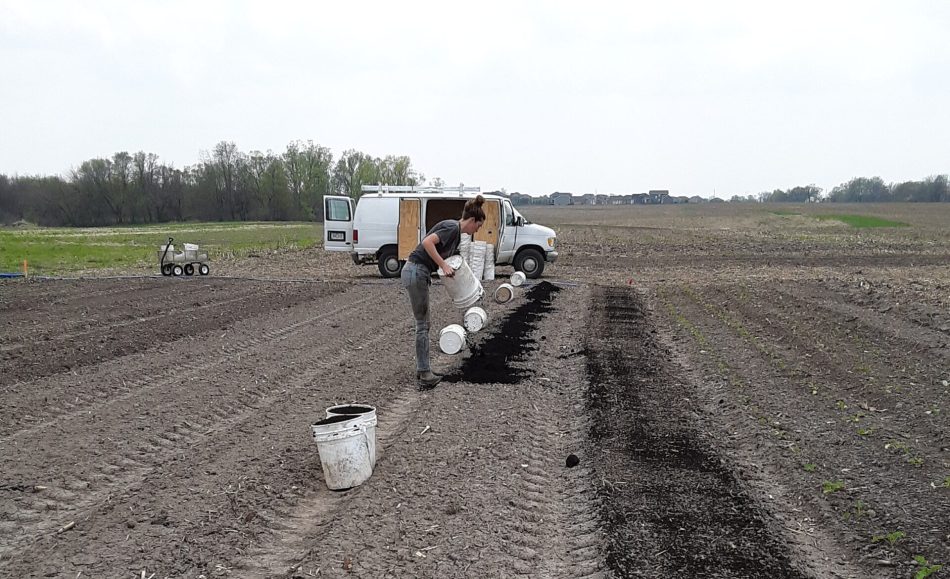
Environmental health
The long term sustainability of our farm operation depends upon the health of the soil, air, wildlife, surrounding waterways, and forest and crop lands. We are humbled to be doing the work of feeding our neighbors healthful produce from our farm, and we are committed to maintaining the health of this land while doing so.
Cover crops
A cover crop is a crop that is grown when and where a cash crop (something the farmer is going to sell) is not being grown. We seed cover crops throughout the growing season to prevent erosion, suppress weeds, and add key nutrients needed for successfully producing vegetable crops back to the soil. Cover crops also offer food and habitat for beneficial insects and wildlife. Like many farmers, we tend to seed oats + peas in the spring, buckwheat in the summer, and rye and vetch in the fall.
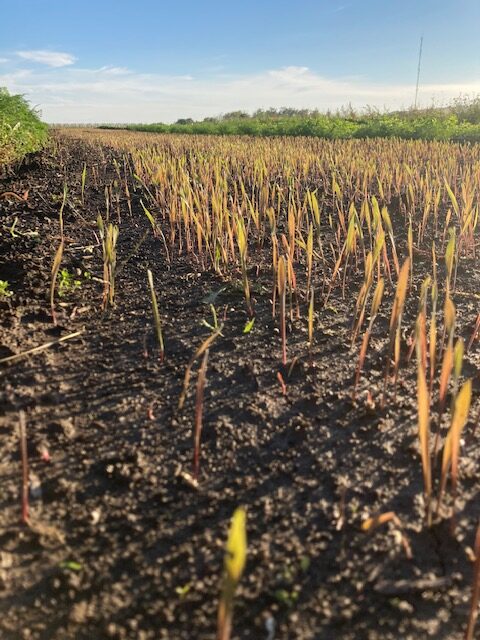
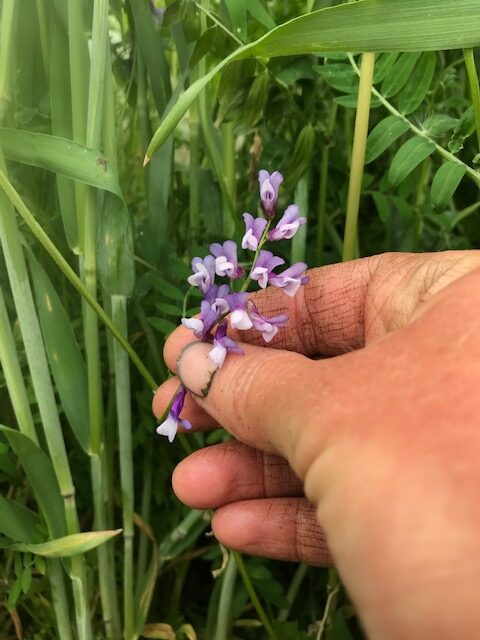
Crop diversification and rotation

Growing about 50 different crops offers the farm security, because if any one crop produces poorly, it doesn’t damage the farm as a whole. Crop diversification offers positive environmental impacts as well. Growing the same crop year after year on the same piece of land can create or exacerbate disease and pest pressure. For this reason, we rotate our crops by family every season following our 10 year crop rotation plan (left).
Compost + tillage
Compost is an essential part of our farm’s fertility. Each season we add tons of compost back to our soil, helping to add back nutrients we remove when we harvest our vegetable crops.
Tilling the soil too frequently can destroy soil structure and have long term negative impacts for water infiltration and life in the soil. We till as little as possible to balance the need to maintain soil integrity and create a fine seedbed where our crops will thrive.
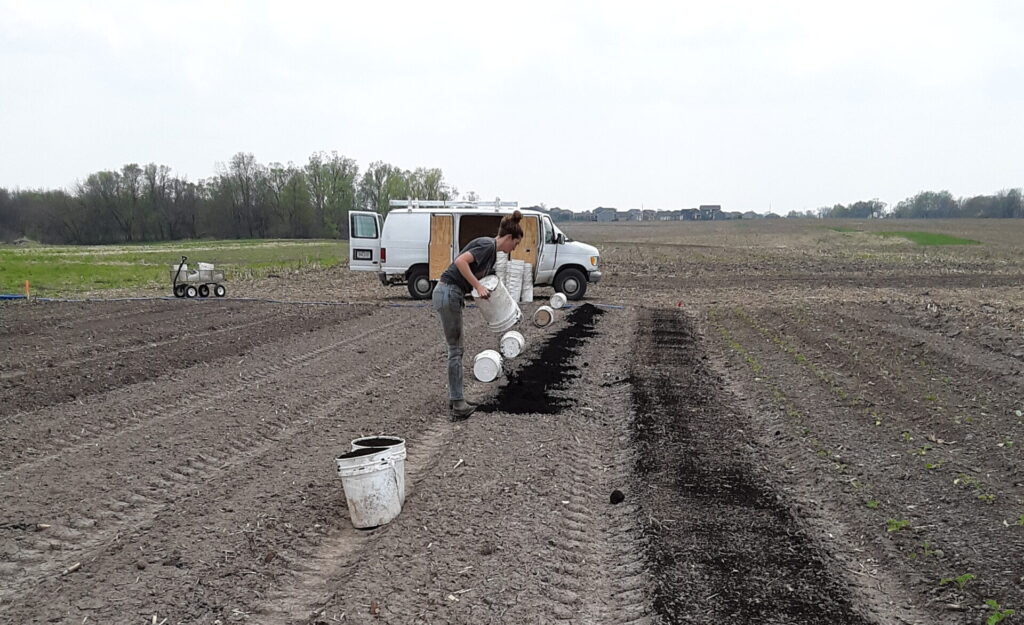
Organic practices
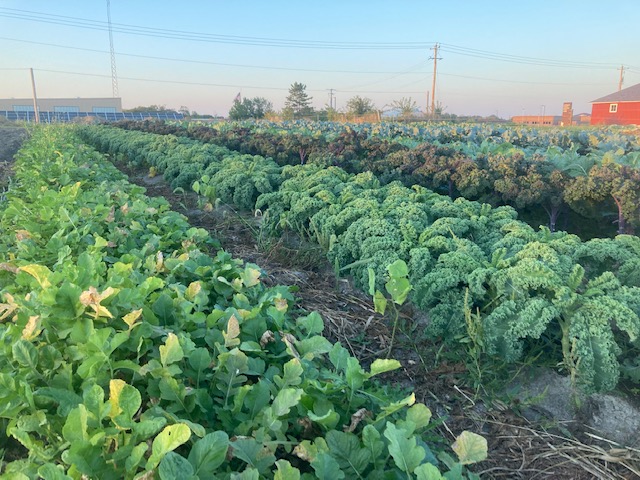
Synthetic chemicals and fertilizers are widely used on conventional farms in Iowa. These products have damaging environmental and human health impacts. While we are not yet certified organic, we have always and will always use organic practices on our farm. We are currently (January 2022) taking steps to begin the process of seeking certification.
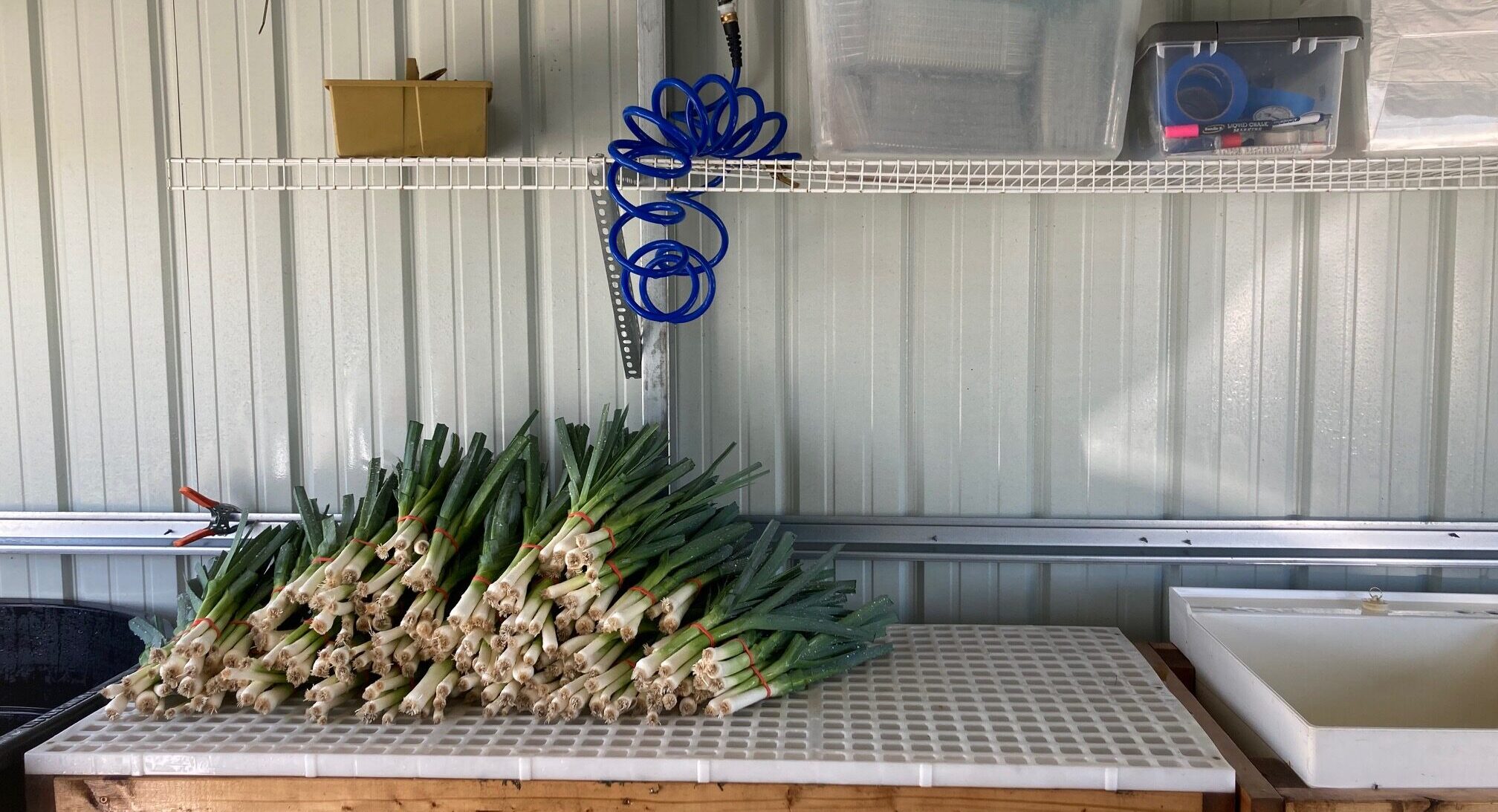
Food safety + access
Food safety
It is vital that we ensure the produce leaving our farm and entering your home is safe to eat, in addition to being totally delicious and nourishing. Carly and Bryant have both taken and passed the Produce Safety Alliance Grower Training Course. Some of the food safety practices we use include cleaning and sanitizing all surfaces that come in contact with harvested produce, including tools, sinks, tubs, bins, and tables, excluding deer from production areas with a 3-D electric deer fence, and washing hands between tasks when handling fresh produce.
Food access
Local produce is often prohibitively expensive, particularly for households with low incomes. Food that nourishes and feels right to the eater should be a right rather than a privilege. In order to move toward the goal of building a farm and CSA where income is not a barrier to participating, we currently take the following actions on our farm:
- Accept SNAP (Supplemental Nutrition Assistance Program) for the CSA and offer discounted rates, and accept Double Up Food Bucks for CSA members paying with SNAP, cutting the cost of the CSA in half
- Accept SNAP and FMNP (Farmers’ Market Nutrition Program) WIC (Women, Infants, and Children) + Senior checks at the farmers’ market
- Offer the option for members to help fund CSA shares for members who would not otherwise be able to afford the full cost. In 2021, this allowed us to fully fund 3 half shares
- Offer a limited amount of working membership opportunities, whereby members interested in learning about organic farming practices volunteer on the farm for 2 hours / week in exchange for a full CSA share
- Host gleaners out to the farm to glean (i.e. harvest for donation) excess produce. In 2021, over 1,000 pounds of fresh produce were donated
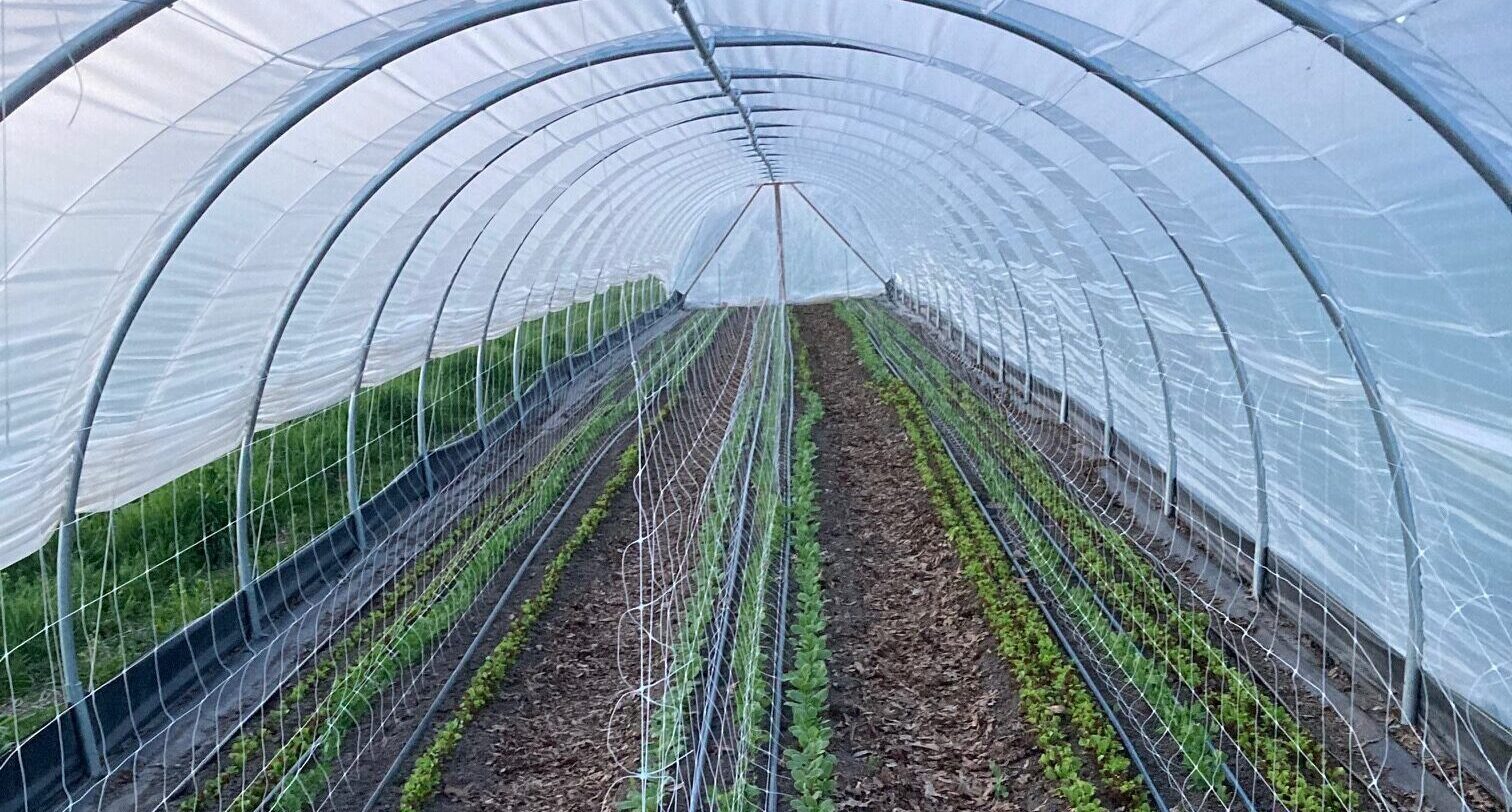
Season extension
While the growing season in Iowa is conventionally thought to be from May – September, it is entirely possible to grow food outside of that window. We are dedicated to challenging the notion that local food is limited to the Summer months through experimentation with season extension.
Caterpillar tunnels
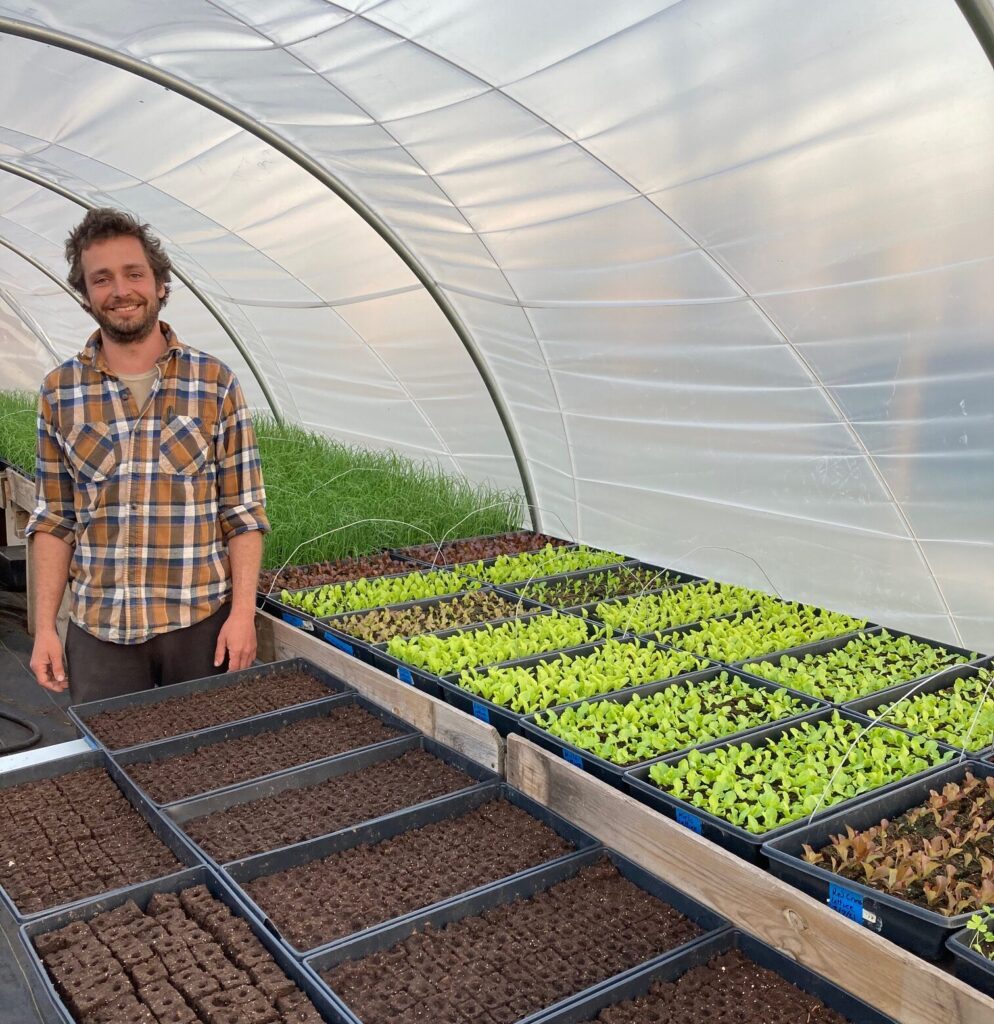
We grow all of our plant starts in a 30′ long tunnel in our backyard in Cedar Rapids (left), and we have now constructed 3 100′ long tunnels at the farm in Iowa City! These tunnels allow us to produce spring crops like radishes, carrots, lettuce, spinach, kale, and much more very early in the season, enabling bountiful harvests in May. These structures also offer sensitive crops like tomatoes shelter from harsh winds and rain. In late fall and early winter, the tunnels once again grow greens and roots, allowing harvests late in December. We also use them to overwinter crops like carrots, kale, and chard.
Quick hoops
Quick hoops, or low tunnels, help farmers both protect crops from pest pressure and from cold exposure. We use quick hoops to grow greens into December, and we have experimented with using them to overwinter crops. This allows us to seed a crop like carrots in late fall, and actually harvest them sometime in late March or early April. While quick hoops can be challenging to work with, especially in a windy state like Iowa, we have found they are an affordable way to protect crops.
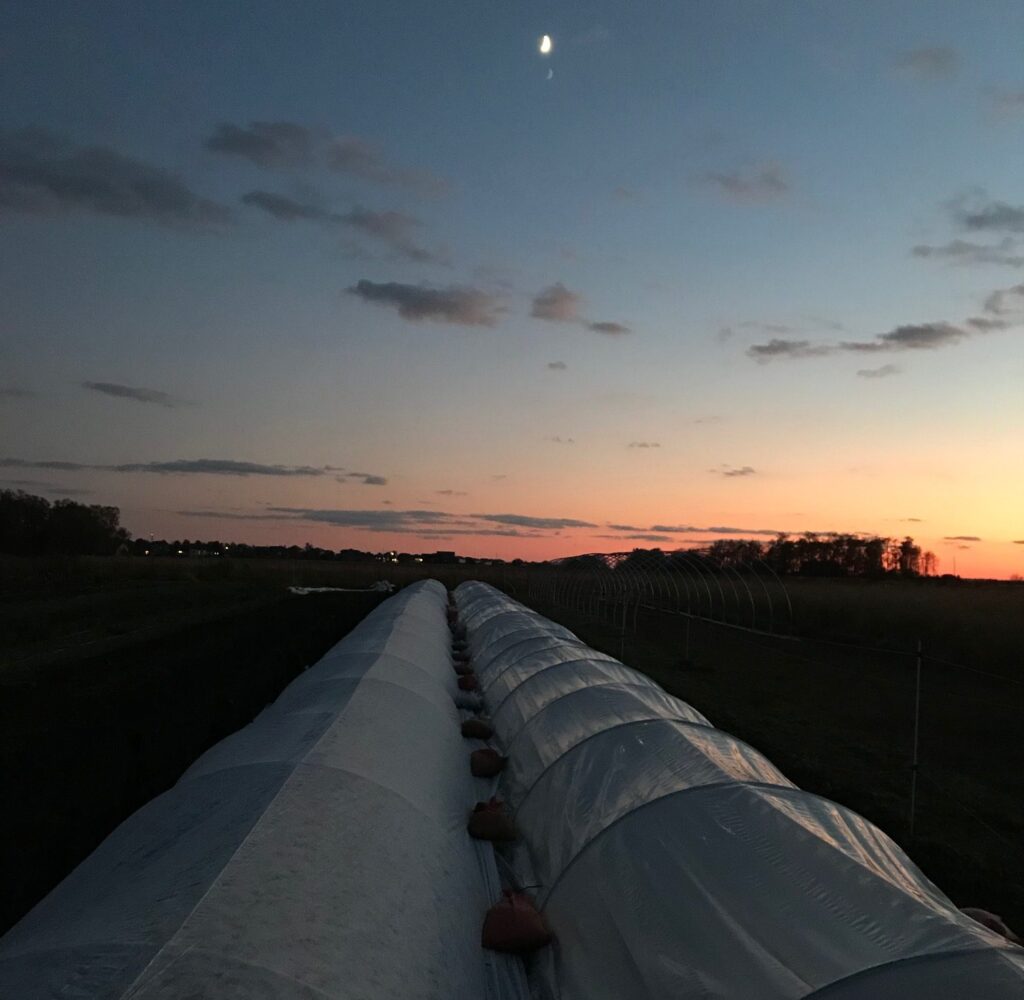
Storage crops
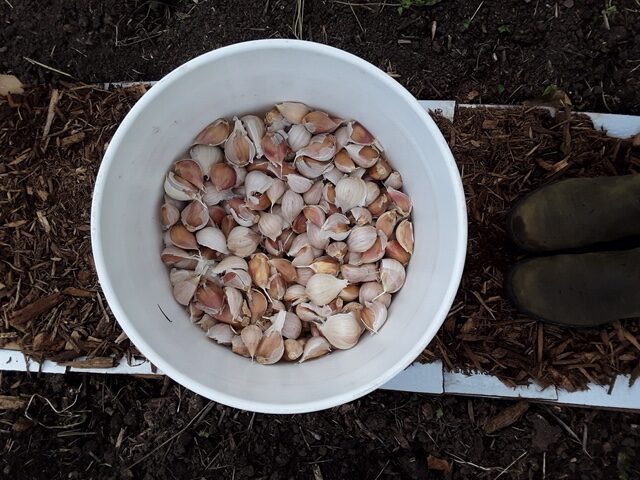
Growing storage crops late in the fall, including carrots, cabbage, beets, kohlrabi, potatoes, onions, shallots, garlic, winter squash, and more allows us to continue to offer produce into December + January. Eventually we aim to construct a root cellar that will help us in this effort to push more local produce out into the community in the winter.